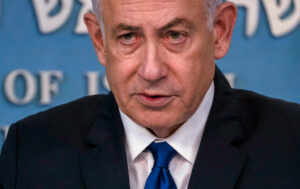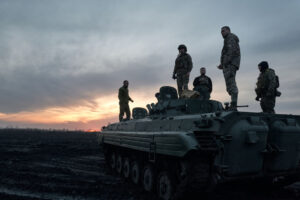In 1944, Leslie Groves, the US army general who managed the Manhattan Project, asked its chief scientist, J. Robert Oppenheimer, just how powerful their new bomb might be. Would it be 10 times as powerful as the largest bomb of the time, the RAF’s Tallboy “earthquake bomb”? Or 50 times, or even 100 times? Oppenheimer replied that he could not be sure — at the time, there were even fears that the explosive chain reaction might never stop — but he expected a bomb much more powerful than 100 Tallboys. Groves immediately replied that such a powerful weapon would not be of much use to anyone, because the “politicians” would never dare to use it.
In the short run, Groves was wrong, while Oppenheimer’s guess was correct. The Hiroshima uranium bomb was in fact more powerful than 1,000 Tallboys, with the Nagasaki plutonium bomb exceeding even that. But only five years later, Groves’s prediction came to pass. First the United States, and then the Soviet Union, and then each successive nuclear power came to the realisation that their nuclear weapons were too powerful to be used in combat. This has remained true in the decades since — all the way up to the invasion of Ukraine. For, despite Putin’s atomic sabre-rattling, he too is subject to Groves’s prediction. Decades after his conversation with Oppenheimer, a brief historical summary of nuclear war has much to teach us about the situation in Ukraine — and how victory might only be attainable there through much more conventional means.
The first test of the nuclear age came with the Korean War. In December 1950, hundreds of thousands of Chinese soldiers crossed the River Yalu to support their North Korean allies against the US. With America in immediate danger of losing tens of thousands of men, General Douglas MacArthur decided that he had to use nuclear weapons to stop the Chinese. By far the most respected US military leader of the time — he had led American forces in the Pacific from humiliating defeat to total victory, and then acted as Japan’s de facto Emperor in reforming the country — MacArthur expected Truman to assent to his superior military judgment. Instead, the answer was a flat no. MacArthur insisted, and he was dismissed.
Truman recognised that the nature of warfare had fundamentally changed since Hiroshima and Nagasaki. When he authorised those strikes, neither he nor anyone else knew that the explosions would also cause radiation fallout, which would sicken and even kill thousands of people miles from the site of the detonation. Moreover, in 1945, Truman was facing the prospect of losing many more American troops in the conquest of Japan than in the entirety of the Second World War up to that point. The Japanese really did fight to the last man, and still had 2 million troops to expend. Truman would have been thrown out of the White House if he had allowed the deaths of hundreds of thousands of Americans by refusing to use the bomb.
But five years later, the situation was very different. Facing catastrophe in Korea, Truman had the alternative of evacuating US troops to Japan if all else failed — and therefore never even considered using atomic weapons. Under the next president, his fission bombs evolved into thermonuclear fusion bombs at least 100,000 times more powerful than Tallboy. But that only made Truman’s “No” of 1950 even more definitive. Nuclear abstinence became the only possible choice for Americans and Russians alike, as the Cuban Missile Crisis precariously but definitively showed.
However, it would take much longer for this logic to develop into a definitive doctrine. Following the establishment of Nato 75 years ago today, and especially in the Sixties and Seventies, exhaustive efforts were made to extract some additional advantage from nuclear weapons and somehow gain the upper hand for the new Western alliance. So-called “tactical” nuclear weapons were made not more, but much less powerful, supposedly to enable their use on the battlefield. Their advocates claimed that they could provide firepower very cheaply, with small nuclear warheads replicating the effect of hundreds of howitzers. Both the US and Soviet armed forces duly acquired thousands of nuclear weapons: not only “small” bombs for fighter-bombers, but also bombardment rockets (some small enough to be carried in a jeep), anti-aircraft missiles, torpedoes, and even portable demolition charges.
But this illusion could not be sustained. Military planners came to understand that if US commanders tried to defend Nato territory by attacking invading Soviet forces with small “tactical” nuclear weapons, the Russians would use their own arsenal to destroy the defending Western forces. The same would apply for any attempt to replace conventional military force with nuclear weaponry. And so it was understood that, while nuclear weapons are a useful deterrent, they can only be used to strike back against a prior nuclear attack — and never to achieve any kind of victory. Thus in the Seventies, when the United States and the Soviet Union were engaged in the elaborate and highly publicised “Strategic Arms Limitation” negotiations, officials on both sides quickly agreed to quietly stop developing, manufacturing and fielding new “tactical” nuclear weapons, before equally quietly disassembling tens of thousands of these weapons.
But in the end, it was the newest nuclear powers, India and Pakistan, that conclusively demonstrated the redundancy of their own nuclear weapons for anything beyond reciprocal deterrence. In the Kargil War of 1999, which involved multiple full-scale battles and thousands of casualties, neither side attempted even a sotto voce threat of a nuclear strike. And this is still true today. When Putin‘s loudest attack dog, Dmitry Medvedev, started barking about the use of “tactical” nuclear weapons after the failure of the initial Russian invasion in 2022, it was only the least competent journalists and those obedient to Moscow who echoed his warnings. Eventually, after several months of this foolishness, Putin came out and said it: Russia would only use nuclear weapons only “when the very existence of the state is put under threat” — meaning by a corresponding nuclear threat.
The situation in Ukraine has turned again, but the same logic holds. Instead of frustrated Russians bogged down in their trenches, now it is the Ukrainian position that looks precarious. Kyiv presents this as a question of materiel, and continually asks for more and better weapons from the West. Yet while more guns and missiles could be sent, it is clear that what is forcing Kyiv to retreat step by step is not a lack of firepower, but a lack of soldiers.
Until this week, conscription in Ukraine only started at the age of 27, as opposed to the global norm of 18. Zelensky has now reduced this to 25; but with many Ukrainians exempted from service, his total armed forces amount to less than 800,000 active personnel. Ukraine is hampered by the age distribution of its population, with children and older people over-represented when compared to young men in the 19-35 age bracket. But its troop total is still too low for a population that exceeds 30 million by most estimates, considering that Israel can rapidly field an army of around 600,000 from a population of around 8 million. This means that, unless Putin decides to end the war, Ukraine’s troops will be pushed back again and again, losing soldiers in the process who cannot be replaced. Russia doesn’t even have to send its finest troops to achieve this — merely volunteer contract soldiers attracted by good pay, or Russian prisoners serving ordinary criminal sentences, recruited straight from their prison cells. Regardless of quality, though, the Russian army already outnumbers the Ukrainian, and the gap is becoming wider every day.
This arithmetic of this is inescapable: Nato countries will soon have to send soldiers to Ukraine, or else accept catastrophic defeat. The British and French, along with the Nordic countries, are already quietly preparing to send troops — both small elite units and logistics and support personnel — who can remain far from the front. The latter could play an essential role by releasing their Ukrainians counterparts for retraining in combat roles. Nato units could also relieve Ukrainians currently tied up in the recovery and repair of damaged equipment, and could take over the technical parts of existing training programmes for new recruits. These Nato soldiers might never see combat — but they don’t have to in order to help Ukraine make the most of its own scarce manpower.
Crucially, with China coming ever closer to an attack on Taiwan, the US cannot provide more troops than the roughly 40,000 who are already in Europe. Thus a momentous decision is in the post for the other Nato members, especially the most populous: Germany, France, Italy and Spain. If Europe cannot provide enough troops, Russia will prevail on the battlefield, and even if diplomacy successfully intervenes to avoid a complete debacle, Russian military power will have victoriously returned to Central Europe. At that point, Western European powers will have to rebuild their armed forces, whether they like it or not, starting with the return of compulsory military service. Perhaps in those circumstances, we might even witness an outbreak of nuclear nostalgia, foolishly harking back to the illusion that apocalyptic weaponry might be enough to keep the peace.
Disclaimer
Some of the posts we share are controversial and we do not necessarily agree with them in the whole extend. Sometimes we agree with the content or part of it but we do not agree with the narration or language. Nevertheless we find them somehow interesting, valuable and/or informative or we share them, because we strongly believe in freedom of speech, free press and journalism. We strongly encourage you to have a critical approach to all the content, do your own research and analysis to build your own opinion.
We would be glad to have your feedback.
Source: UnHerd Read the original article here: https://unherd.com/




